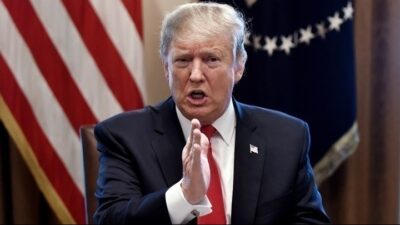Giorgos Adalis: Why the pandemic is bringing a worse crisis than the Great Depression
02/12/2020
In the last 150 years, from 1876 until today, the planet has experienced a global economic recession 14 times. On February 14, 2020, having already gathered the first evidence of the impact of the pandemic in China, we estimated how devastating the pandemic would be for economies. At that time we relied – not accidentally – mainly on fuel consumption as an index.
When the price of crude oil fell to $ 29 in the spring, we referred to the term “global equilibrium peace price.” The “price of peace” is a price, which is essentially the average of the warring factions in the energy market, at which everyone is relatively satisfied. I had even explained why the global “peace price” for 2020 is $ 42.40 / barrel for crude and $ 44.20 for Brent. The technical analysis of the markets showed dark days for the oil price and I had estimated that the prices would lead to a free fall.
A little later, things not only got worse, but something unprecedented happened. The price of a barrel of crude fell below zero and even reached -37 dollars/barrel. How and why did this unprecedented phenomenon happen so that petroleum sells at negative prices, that is, producers pay in order to get rid of their goods?
What is the price of “peace”
When the situation began to show a comeback and gradually returned to normal, the barrel prices, from the summer to today, have fluctuated around the “global equilibrium peace price”. At +/-2 dollars, the price fluctuated, throughout the crisis, at around $ 42.4 for crude to 44.2 for Brent. It is neither the high prices sought by the Saudis nor the low prices sought by major oil consumers such as China.
As we move away from the “price of peace” there is an anomaly in the markets and unrest. When the price moves in double digits, up or down, then the risk of ignition is visible. This can even lead to open regional rivalry. Indeed, the dramatic fall in prices, in addition to the deeper structural problems it brought, led to crises, something that the disputing factions understood.
So after the period of the big fall, everyone put water in their wine and we were led to global agreements, with which in a week the barrel price showed an explosive rise of + 337% and to recover. Since then, it has moved to the level of the “price of peace”.
What will the West do?
It is understood that this price is changing. It depends on the level of the world economy and geopolitical developments. Thus, a very crucial role in determining prices will be played between December 2020 and January 2021. These two months, over time, are the “heavy” months of global consumption and therefore global production. The reason of course is the Christmas holidays.
An extension of quarantine in the West during the holidays will cause enormous damage to the world economy, in addition to the enormous damage that has already been done. If the western countries, which are the leading consumers, remain trapped by the coronavirus, then we will not just talk about a recession in 2020, which will have severe effects the world economy, but an even worse 2021, which will disintegrate the world economy.
If the economies operate freely in December, the “peace price” for 2021 will be $ 48.9 a barrel. The problem will be big, but it will be manageable and in three years we will return to the levels before the coronavirus. If economies are experiencing severe lockdowns or there are restrictions on the consumer habits of the best trading month of the year, then they should be re-evaluated.
Contraction of the economy
If lockdowns are imposed, we need to look at the contraction of the economy by industry. Contraction as a phenomenon occurs in both positive and negative periods. In negative times like now, it starts by hitting specific areas. Coronavirus directly affects energy, tourism, the aviation industry, and the automotive industry.
However, the rapid decline in demand for these products or services for more than a quarter transmits the crisis from the directly affected sectors to others related to the former. And it is gradually affecting even more remote sectors, as consumers’ refusal to make purchases due to fear, or change of habits, has resulted in the gradual impact on all sectors of the economy. Even those who flourish in quarantine such as e.g. the IT sector.
The contraction caused by a “heavy” economic phenomenon such as the coronavirus does not hit all states the same. In general, however, the negative contraction in an economy can bring the worst if it finally hits the demand curve (consumers). And finally it causes the contraction of the economy as a whole.





